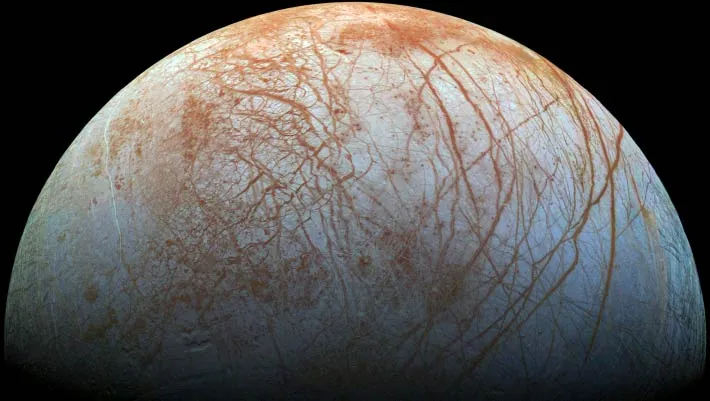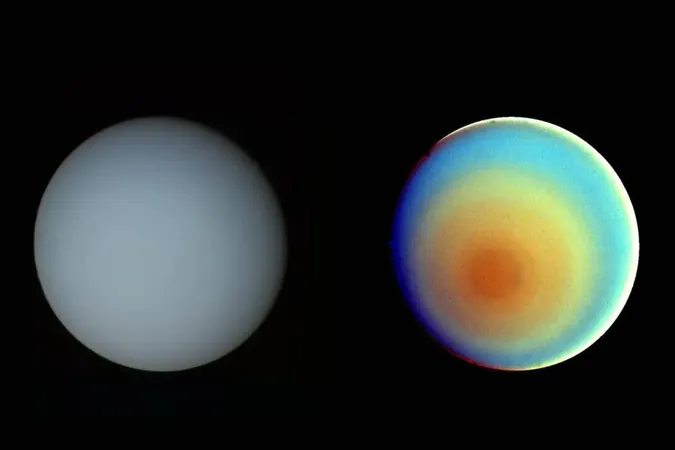
Unraveling the Mysteries of Tidal Forces: How Our Solar System’s Bodies Are Shaped by Gravity
2024-11-07
Author: Emily
Understanding Tidal Forces
A groundbreaking collaboration between researchers from the Lunar and Planetary Laboratory at the University of Arizona, TU Delft, and Caltech has unveiled a revolutionary method to understand the tidal forces acting on the interiors of planets and their moons across the Solar System. This innovative approach addresses how these celestial bodies, often irregular in shape, are affected by gravitational interactions.
The Influence of Massive Planets
Have you ever wondered how the gravitational pull of massive planets influences their moons? Body tides, which refer to the deformations that celestial bodies experience due to gravitational interactions, play a critical role in this phenomenon. Imagine the aspect of Jupiter’s intense gravity pulling and stretching its icy moon, Europa. As Europa orbits Jupiter in an elliptical path, it experiences varying levels of gravitational force—an effect that is crucial for heating its inner ocean below an icy surface.
Tidal Heating and Habitability
Dr. Alexander Berne from Caltech highlights that this process doesn’t stop with Europa; it extends to Saturn's moon Enceladus, which has a much more irregular ice shell than Europa. Research suggests that such tidal heating could potentially create the right conditions for supporting life. The tidal responses of such bodies impact their geological evolution and the possibility of habitability, sparking curiosity about the universe beyond Earth.
Variations in Tidal Responses
According to the researchers, celestial bodies that are not perfectly spherical exhibit distinct tidal responses when subjected to gravitational forces. The latest findings indicate how variations in the interior structure—such as changes in the thickness and material of an ice shell—can lead to significant differences in tidal heating. For instance, the team noted that for moons like Ganymede and Enceladus, thickness variations can cause noticeable extra signals in response to tidal forces.
Implications for Future Research
The implications of this research are far-reaching. The new method developed by the team allows scientists to further refine their observations of various celestial missions, such as Japan's BepiColombo, aimed at Mercury, and the upcoming European Space Agency’s JUICE mission to Jupiter’s moons. These missions promise to enhance our understanding of not just the composition of these bodies, but also their potential for hosting life in their hidden oceans.
Conclusion
As we remain captivated by the complexities of our Solar System, this research will undoubtedly advance our comprehension of the factors influencing the evolution of these distant worlds. Stay tuned as we continue to explore the incredible connections between tidal forces and the very foundations of life beyond Earth.
Stay Updated!
For the latest updates on space exploration and the mysteries of our universe, follow us—there's so much more to discover!









 Brasil (PT)
Brasil (PT)
 Canada (EN)
Canada (EN)
 Chile (ES)
Chile (ES)
 España (ES)
España (ES)
 France (FR)
France (FR)
 Hong Kong (EN)
Hong Kong (EN)
 Italia (IT)
Italia (IT)
 日本 (JA)
日本 (JA)
 Magyarország (HU)
Magyarország (HU)
 Norge (NO)
Norge (NO)
 Polska (PL)
Polska (PL)
 Schweiz (DE)
Schweiz (DE)
 Singapore (EN)
Singapore (EN)
 Sverige (SV)
Sverige (SV)
 Suomi (FI)
Suomi (FI)
 Türkiye (TR)
Türkiye (TR)